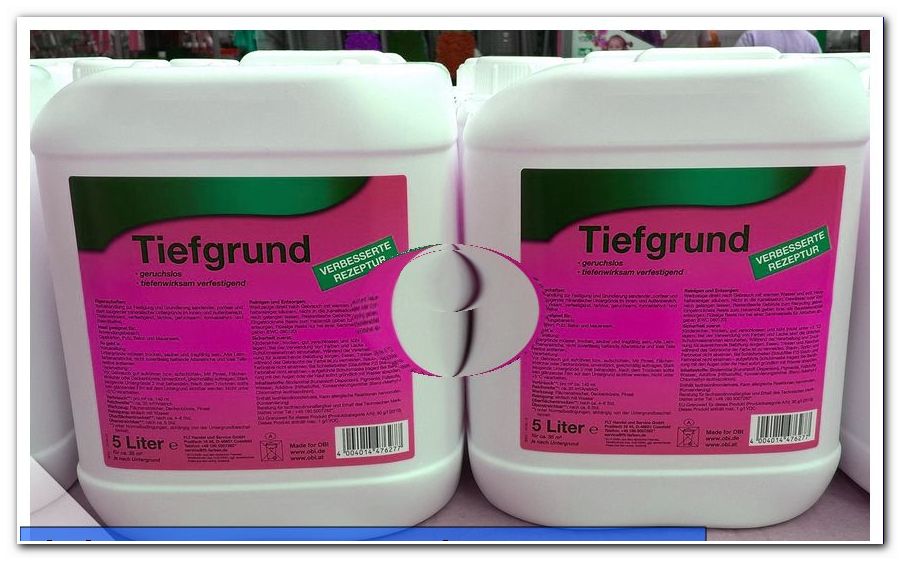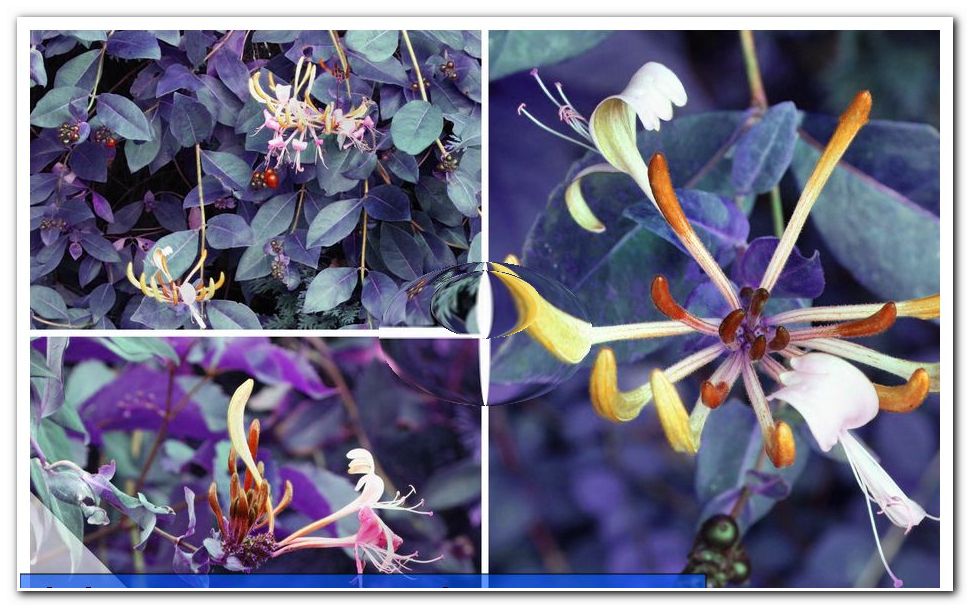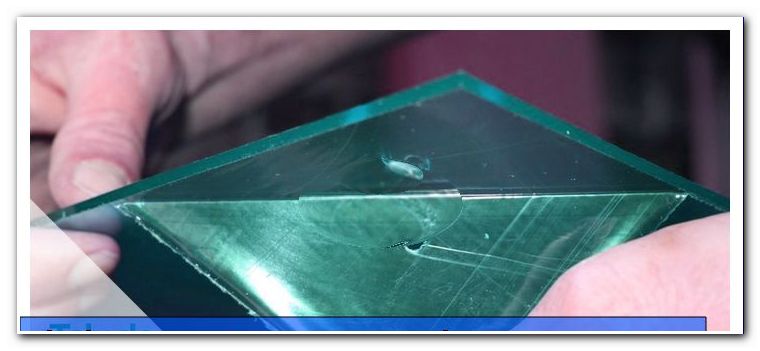Learn to read the crochet script and translate it correctly - instructions

- What does the crochet script mean?> The stitches and their symbols
- Thread ring / Magic Ring
- Luftmasche
- Turning Luftmasche
- Start or climb air meshes
- slip stitch
- Solid mesh
- Half the stick
- The whole chopsticks
- The double stick
- More crochet symbols
Crochet is trendy and crocheting is just a wonderful hobby. Whether amigurumi or a jacket, whether a carpet or a great utensil, today everything can be crocheted. Beautiful yarns and new crochet patterns make it possible. If getting started in this hobby is easy with simple instructions, however, even the practiced Häkelfan can reach its limits over time. Especially when more complicated or even foreign crochet patterns are called in the net. Reworking would be easy if these instructions did not just consist of symbols and signs. That is, the crochet script must be learned. Once understood, reading and translating the crochet script is no longer difficult.
We'll show you how to translate each symbol and how to do it.
The wonderful thing about the crochet font is that it is written almost the same all over the world. No language barrier prevents you from conjuring a crochet pattern from Japan into your living room.
And once you have learned the crochet script, you can see at a glance how to crochet the next round or the next stitch. Our explanations will be helpful.
If you are a bloody crochet beginner, you will find a detailed introduction to crocheting here: Learning to Crochet As a beginner, we recommend this to you before you start learning crochet writing.
What does the crochet script mean?
The crochet font is a system that shows the different stitches in their relationship to each other. Every stitch, every crochet technique has its own symbol. The crochet font is therefore used to illustrate a crochet pattern, it represents a written guide graphically. One receives when looking at a pattern that is represented by the crochet font, an overview of how the pattern was put together. With a little practice, this language of sign explanations can all be learned quickly.
Below we show you in a simple way, which meaning the individual symbols have. Here you can download a clear table with the most common symbols and meshes: Download - crochet font

We also show you how these are often abbreviated in a crochet pattern. And we'll explain how to crochet the most common symbols.
The stitches and their symbols
Thread ring / Magic Ring
Abbreviation: FR - Fd ring

With a string of thread a work crocheted in rounds is begun. The thread ring is the nicer way to the air mesh ring.
The work thread is pulled over the left index finger to the thumb and completely wrapped around the left thumb. The loosely hanging down thread is fixed with a finger. The end of the thread is always behind the thumb and pointing down.
In this thumb ring, the crochet hook is pushed through and the working thread, which is stretched between the index finger and the thumb, pulled through the thumb loop. On the crochet hook is now a movable mesh. Use the crochet hook to get the work thread and pull it through this stitch. Now the basis for the thread ring is worked.
Now you can crochet either solid loops or sticks in this ring.
These are always crocheted over the double thread. After all the stitches are in the ring, the short thread is simply tightened and the ring closes.
Luftmasche
Abbreviation: running meter

The air mesh is the basis of every crochet work. Many works start with an aerial chain. New rounds start with climbing air meshes. To turn the job, you often need spiral air mesh.
A hole pattern would not be a hole pattern without air mesh.
Especially filet crochet are perfectly perforated with air mesh. The symbol of the air mesh will often meet you. The air mesh is just a loop that is pulled through the last stitch. A chain of stitches is created when one loop stretches to the next.
Crochet the first mesh of air, a circle is placed between the two fingers with the working thread. The shorter thread hangs down to the right. Now you get with the crochet hook this short thread, leaves it on the needle and pulls the work threads. This is the first aerial mesh of a work. For further air stitches, simply pull the thread repeatedly through the loop.
The legend of an aerial mesh is usually an open point, but some instructions also show a painted point.
Turning Luftmasche
Abbreviation: W-Lftm
Spiral and mesh are used in almost every crochet work.
Turning chain stitch:
As spiral air mesh, the air mesh is called, which is needed to turn a job. Unless otherwise stated in a manual, this spiral air stitch is not counted as a stitch. It serves only for turning and it is worked on in the first loop of the preliminary round. This scam is never even crocheted. If, however, the spiral air mesh is counted as a mesh in a manual, then these are usually chopsticks that replace a mesh. This is then stated in a manual exactly.
For example, if the instructions at the end of a row are 4 crochets, that means you need to crochet a stick and an airlock. Arrived at the end of such a round, put back in the 3rd air mesh and turn according to the information the work.
Start or climb air meshes
Abbreviation: Start-Lfm
A beginner or ascender is crocheted when working in rounds. A round always ends with a chain stitch. In order to reach the right working height again, crooks must be crocheted.
If the instructions are not specific, this means:
- For a sturdy loop, crochet 1 ascending air mesh / initial air stitch.
- For a half stick two riser air meshes are worked.
- For a whole chopsticks 3 crocheted air meshes are crocheted.
- For a double rod 4 riser air meshes must be worked.
In the explanations the turning or rising air meshes are always displayed as air meshes. There is no extra symbol for it.
slip stitch
Abbreviation: Km or Kettm.

Circular rounds are closed with the chain stitch
Crochet work together or the further work brought into the next position, as is often the case with Grannys. The symbol of the chain stitch you have to look a little closer, because it is often shown only very small.
In a warp stitch, the crochet hook is used to puncture the next puncture site, picks up the thread and pulls it through both loops on the needle.
Solid mesh
Abbreviation: fM

Fixed stitches are among the basic stitches of a crochet work. They gladly serve to give the work a certain stability. So there are many crochet work, which consist mainly of solid mesh. For example, bags, utensils, hats, Amigurumi artwork and much more.
In the case of the sturdy stitch, you stick to the next puncture site (this can only be an air mesh), get the work thread - now lie two loops on the crochet hook again a working thread and pull through the two loops that are on the needle, pull through.
Half the stick
Abbreviation: hSb

Half the stick is the smallest stick in the big stick family.
The symbol of all rods only changes at the drawn horizontal stripes. With the half-sticks are also like to work hard works crocheted. Solid hats, rugs, baskets and placemats. With half a stick you first put an envelope on the needle,
then pricks into the next puncture site and fetches the working thread, pulls it through the puncture site - now lie three loops on the crochet hook, pick up a thread again and pull through all three loops simultaneously.
In the sign explanations of some work instructions you must be careful that you do not confuse the symbol of the half-stick with the symbol of a fixed mesh.
The whole chopsticks
Abbreviation: Stb / gStb

Loose crochet work can be created with the whole stick - slightly falling caps, grannies, felt crochet work and much more.
The whole stick starts just like half the stick. You put an envelope on the crochet hook,
pricks into the next puncture site of the next stitch, gets a work thread with the crochet hook and pulls it through the puncture site. Now there are three loops on the needle. Put another thread on the crochet hook and guide it through the first two loops. Now there are only two loops on the needle. Get a work thread again
and pull it through the last two loops.
The double stick
Abbreviation: dStb

Double chopsticks are very long stitches and make every crochet piece very loose.
The double stick is often used in Grannys or when nets are crocheted. The double stick starts like the whole stick. The difference is that not one envelope, but two envelopes are placed on the crochet hook. In the next puncture site of the upcoming stitch sting,
get a working thread and pull it through the puncture site. There are now four loops on the crochet hook. Take work thread, pull through the first two loops, now there are still three loops on the needle, again get a working thread and pull through the next two loops,
there are only two loops on the needle. Get another work thread and pull it through the last two loops.
- 3-fold chopsticks - abbreviation 3-f stb

- 4-fold chopsticks - abbreviation 4-f stb

The triple and quadruple sticks are used like the double stick mainly in Grannys or nets. Wherever larger holes are desired. 3 and 4-fold chopsticks are crocheted just like the double stick. Instead of 2 envelopes, 3 and 4 envelopes are placed on the needle at the beginning. The uncoiling of these envelopes is the same as the double stick. It will be crocheted with each work thread only two loops.
For example, in the case of the triple sticks, the working thread has to be taken four times and pulled through two loops again and again.
With the 4-fold chopsticks, it is exactly five times that the working thread has to chop off two loops.
The sign explanations for chopsticks are easy to distinguish. Each cross stroke shows how many envelopes need to be placed on the crochet hook.
More crochet symbols
2 fixed stitches in one puncture site:

When crocheting 2 fixed loops in a puncture site, this is usually done due to an increase.
If you see this sign in a crochet font, you simply work two solid stitches in the same puncture site. Each stitch is worked on its own. It only connects the same puncture mesh.
2 sticks in one puncture site or 3 sticks in one puncture site:
These symbols are like the 2 fixed stitches in a puncture site. You are now working only two or three sticks in the same stitch.

Cut off two solid stitches together:

If two solid stitches are to become a single loop, they must be stitched together.
Thus, the mesh size is reduced, or the work is made tighter.
To do this, stick into a stitch and get the thread through this stitch. There are now two loops on the needle. Insert again into the next stitch and also pull the thread through the loop. You now have two semi-finished, solid loops with three loops on the needle. Get a working thread again and pull it through all three loops at the same time.
Cut off two sticks together:

Whenever two stitches have to be embarrassed together, the crochet work is reduced. It is a simple way of reducing the mesh within a row or round.
Work a chopstick in the next injection site.
Do not pull the thread completely through the loop, but leave two loops on the needle. Now work in the next stitch again a chopsticks. Again, leave the last loop on the needle. You now have a total of three loops on the needle. Get a work thread again and pull it through all three loops. From two chopsticks you have now worked a chopsticks.
Crochet knob:
Knobs are sticks that are all in the same puncture site and only at the end of the day are washed off together.

This symbol is a knob with three sticks. For this purpose, three rods are worked into a puncture site, but each one is not completed by itself.
For example, at the end of three sticks there are four loops on the crochet hook.
And only then these four loops are then mitgemascht together with a work thread.
These were the most important explanations and symbols that can be found in a crochet script. However, it can happen that you still get a symbol on more complicated crochet work, which was not listed here. The language of crochet writing is as infinite as the spoken language. There are always new words or symbols.




